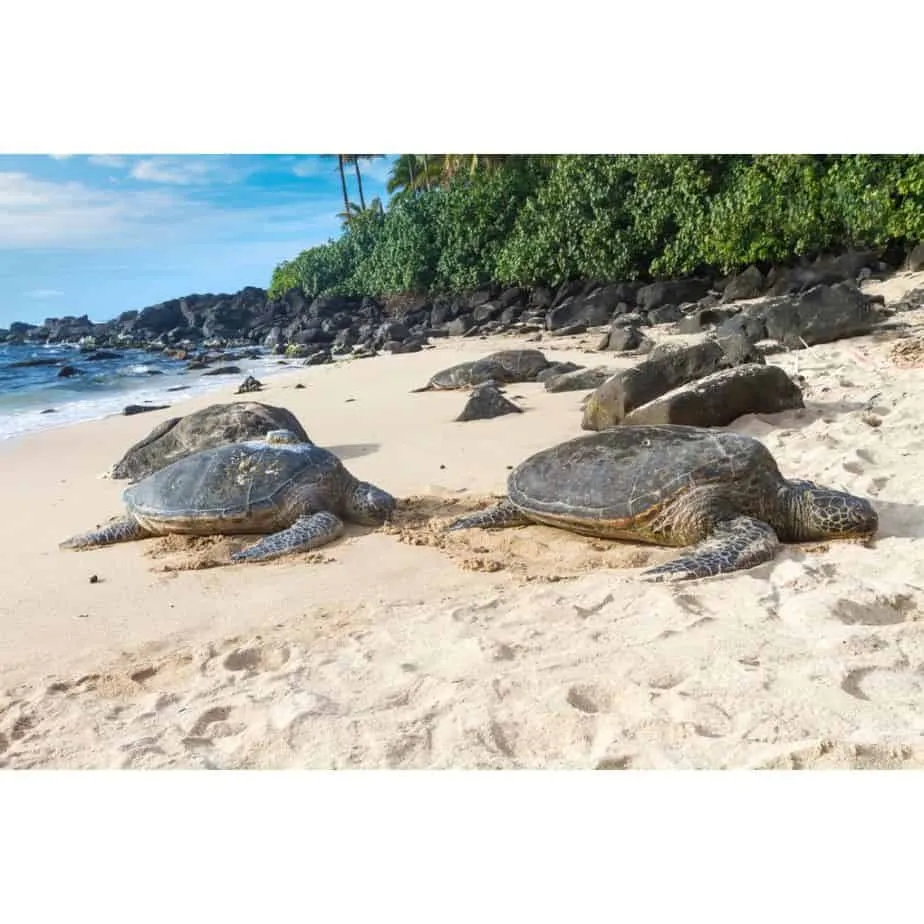Hawaii, the tropical paradise with stretches of white sandy beaches, crystal-clear waters, and radiant sunshine, is a dream destination for many. However, to ensure a safe and memorable beach vacation in Hawaii, it’s essential to keep a few important tips in mind. This article will provide detailed and useful information to help you fully enjoy the beauty of Hawaii without encountering unnecessary risks.
Understand Weather and Ocean Conditions
Weather in Hawaii can change quickly, which directly affects ocean conditions. Before heading into the water, take some time to observe and learn about the current weather situation.
- Check weather forecasts: Reliable websites and apps offer detailed information about temperature, wind direction, rainfall, and especially wave heights.
- Pay attention to warnings: Be mindful of hazard signs placed at beaches. These warnings typically relate to large waves, rip currents, or the presence of dangerous marine life.
- Big waves: During the winter months (November to March), the northern shores of Hawaiian islands often experience massive waves, attracting professional surfers. However, these waves can be extremely dangerous for regular swimmers.
Identify and Escape Rip Currents
Rip currents are one of the most significant hazards for swimmers. These powerful currents pull water from the shore out to the sea, potentially dragging swimmers away from the beach quickly.
- How to recognize them: Rip currents often appear darker than surrounding water or have white foam and debris floating on the surface. Sometimes, they look like calm patches amid breaking waves.
- How to escape: If caught in a rip current, don’t panic. Avoid attempting to swim against the current, as this will tire you out quickly. Instead, swim parallel to the shore until you’re out of the current, then swim back toward the beach.
- Seek help: If you’re struggling, signal for assistance from lifeguards.
Choose Safe Beaches with Lifeguards
Not all Hawaiian beaches are safe for swimming. Some have dangerous terrains, large waves, or strong currents.
- Prioritize lifeguard-monitored beaches: Opt for beaches with on-duty lifeguards. These professionals are trained to handle emergencies and ensure your safety.
- Ask locals for advice: Local residents often have valuable insights about the safest and most suitable beaches for swimming.
- Research beach conditions: Before visiting a beach, learn about its characteristics, including depth, type of sand, the presence of coral reefs, and any potential hazards.

Protect Your Skin from the Sun
The Hawaiian sun is very intense, making skin protection essential to avoid sunburn and long-term health issues.
- Use sunscreen: Apply sunscreen with SPF 30 or higher, broad spectrum, and water-resistant properties at least 20 minutes before heading outdoors. Reapply every two hours or after swimming.
- Wear protective clothing: Opt for long-sleeved shirts, long pants, and wide-brimmed hats to shield your skin from direct sunlight.
- Seek shade: Reduce exposure to direct sun during peak UV hours, typically from 10 a.m. to 4 p.m. Find shade under trees, umbrellas, or other shelters.
Be Cautious Around Marine Life
Hawaii is home to diverse marine life, some of which may pose risks to humans.
- Box jellyfish: These jellyfish often appear on Hawaiian beaches 8–10 days after a full moon. Their stings can cause intense pain and, in severe cases, be life-threatening. If stung, rinse the area with vinegar and seek medical attention immediately.
- Portuguese man-of-war: Identifiable by their blue or purple color, these jellyfish-like creatures float on the surface and have long venomous tentacles. Avoid touching them, as their stings can cause burning pain, respiratory difficulty, and other severe symptoms.
- Sharks: Though rare, shark encounters are a potential hazard in Hawaii. Avoid swimming in areas frequented by sharks, especially during dawn or dusk.
- Sea urchins: Sea urchins have sharp spines that can cause pain if you accidentally step on them. Wear water shoes or sandals to protect your feet.
Respect the Marine Environment
Hawaii’s ecosystems are fragile, and protecting the environment is everyone’s responsibility.
- Don’t litter: Dispose of trash properly and leave no trace on the beach.
- Don’t disturb wildlife: Avoid touching, feeding, or harassing marine animals, including sea turtles, seals, and dolphins.
- Choose reef-friendly sunscreen: Use sunscreens free of harmful chemicals like oxybenzone and octinoxate, which can damage coral reefs.

Other Important Tips
- Stay hydrated: Drink plenty of water to avoid dehydration, especially during outdoor activities in hot weather.
- Avoid swimming while intoxicated: Alcohol impairs your judgment and reaction time, increasing the risk of accidents while swimming.
- Never swim alone: Always have a buddy when swimming, particularly in remote areas.
- Learn about local culture: Respect Hawaiian customs and traditions.
Conclusion
Swimming in Hawaii’s beaches is an extraordinary experience, but prioritizing safety is key. By understanding weather patterns, recognizing potential hazards, and following precautionary measures, you can fully enjoy Hawaii’s beauty without unnecessary risks. Wishing you a safe and unforgettable vacation in Hawaii’s paradise!